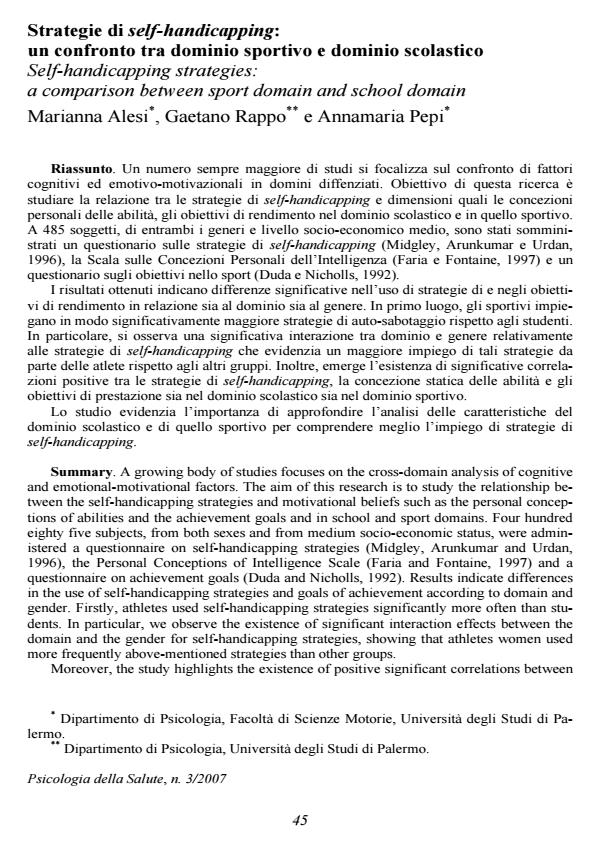Strategie di self-handicapping: un confronto tra dominio sportivo e dominio scolastico
Titolo Rivista PSICOLOGIA DELLA SALUTE
Autori/Curatori Marianna Alesi, Gaetano Rappo, Annamaria Pepi
Anno di pubblicazione 2008 Fascicolo 2007/3
Lingua Italiano Numero pagine 13 P. 45-57 Dimensione file 189 KB
DOI
Il DOI è il codice a barre della proprietà intellettuale: per saperne di più
clicca qui
Qui sotto puoi vedere in anteprima la prima pagina di questo articolo.
Se questo articolo ti interessa, lo puoi acquistare (e scaricare in formato pdf) seguendo le facili indicazioni per acquistare il download credit. Acquista Download Credits per scaricare questo Articolo in formato PDF

FrancoAngeli è membro della Publishers International Linking Association, Inc (PILA)associazione indipendente e non profit per facilitare (attraverso i servizi tecnologici implementati da CrossRef.org) l’accesso degli studiosi ai contenuti digitali nelle pubblicazioni professionali e scientifiche
Self-handicapping strategies: a comparison between sport domain and school domain ABSTRACT: A growing body of studies focuses on the cross-domain analysis of cognitive and emotional-motivational factors. The aim of this research is to study the relationship between the self-handicapping strategies and motivational beliefs such as the personal conceptions of abilities and the achievement goals and in school and sport domains. Four hundred eighty five subjects, from both sexes and from medium socio-economic status, were administered a questionnaire on self-handicapping strategies (Midgley, Arunkumar and Urdan, 1996), the Personal Conceptions of Intelligence Scale (Faria and Fontaine, 1997) and a questionnaire on achievement goals (Duda and Nicholls, 1992). Results indicate differences in the use of self-handicapping strategies and goals of achievement according to domain and gender. Firstly, athletes used self-handicapping strategies significantly more often than students. In particular, we observe the existence of significant interaction effects between the domain and the gender for self-handicapping strategies, showing that athletes women used more frequently above-mentioned strategies than other groups. Moreover, the study highlights the existence of positive significant correlations between the self-handicapping strategies, the static conception of abilities and the performance goals both in school domain and sport domain. In summary the research emphasizes the importance of analyzing properties of school and sport domains in depth in order to better understand the use of self-handicapping strategies.
Marianna Alesi, Gaetano Rappo, Annamaria Pepi, Strategie di self-handicapping: un confronto tra dominio sportivo e dominio scolastico in "PSICOLOGIA DELLA SALUTE" 3/2007, pp 45-57, DOI: